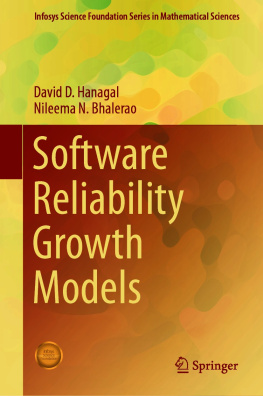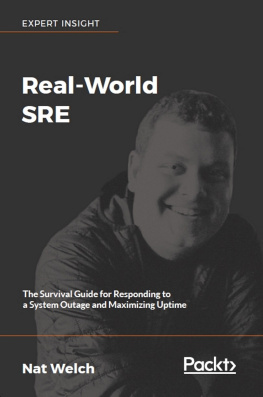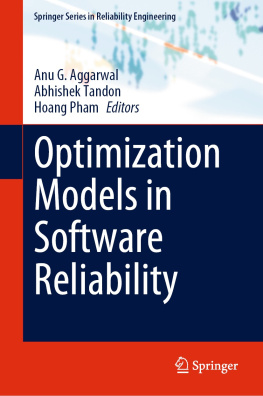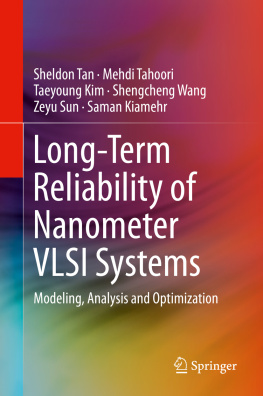David D. Hanagal - Software Reliability Growth Models
Here you can read online David D. Hanagal - Software Reliability Growth Models full text of the book (entire story) in english for free. Download pdf and epub, get meaning, cover and reviews about this ebook. year: 2021, publisher: Springer Singapore, genre: Computer. Description of the work, (preface) as well as reviews are available. Best literature library LitArk.com created for fans of good reading and offers a wide selection of genres:
Romance novel
Science fiction
Adventure
Detective
Science
History
Home and family
Prose
Art
Politics
Computer
Non-fiction
Religion
Business
Children
Humor
Choose a favorite category and find really read worthwhile books. Enjoy immersion in the world of imagination, feel the emotions of the characters or learn something new for yourself, make an fascinating discovery.
- Book:Software Reliability Growth Models
- Author:
- Publisher:Springer Singapore
- Genre:
- Year:2021
- Rating:3 / 5
- Favourites:Add to favourites
- Your mark:
- 60
- 1
- 2
- 3
- 4
- 5
Software Reliability Growth Models: summary, description and annotation
We offer to read an annotation, description, summary or preface (depends on what the author of the book "Software Reliability Growth Models" wrote himself). If you haven't found the necessary information about the book — write in the comments, we will try to find it.
Software Reliability Growth Models — read online for free the complete book (whole text) full work
Below is the text of the book, divided by pages. System saving the place of the last page read, allows you to conveniently read the book "Software Reliability Growth Models" online for free, without having to search again every time where you left off. Put a bookmark, and you can go to the page where you finished reading at any time.
Font size:
Interval:
Bookmark:
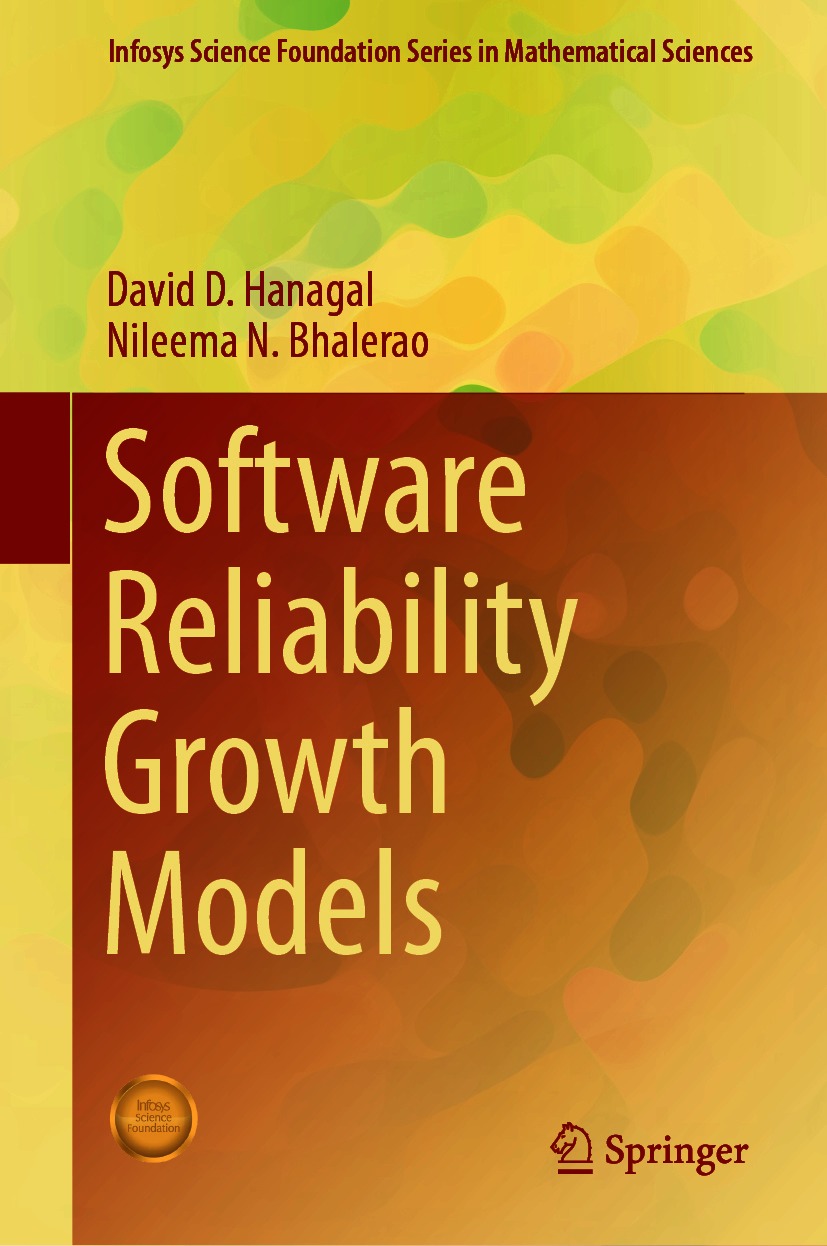
The Infosys Science Foundation Series in Mathematical Sciences, a Scopus-indexed book series, is a sub-series of the Infosys Science Foundation Series. This sub-series focuses on high-quality content in the domain of mathematical sciences and various disciplines of mathematics, statistics, bio-mathematics, financial mathematics, applied mathematics, operations research, applied statistics and computer science. All content published in the sub-series are written, edited, or vetted by the laureates or jury members of the Infosys Prize. With this series, Springer and the Infosys Science Foundation hope to provide readers with monographs, handbooks, professional books and textbooks of the highest academic quality on current topics in relevant disciplines. Literature in this sub-series will appeal to a wide audience of researchers, students, educators, and professionals across mathematics, applied mathematics, statistics and computer science disciplines.

This Springer imprint is published by the registered company Springer Nature Singapore Pte Ltd.
The registered company address is: 152 Beach Road, #21-01/04 Gateway East, Singapore 189721, Singapore
Dedicated to Our Parents
Software plays an important role in both real life and industrial organizations. In order to assure the reliability of software, a long testing process is usually needed before the software can be finally released to market. During the last few years, several software reliability growth models (SRGMs) have been introduced to characterize the growth of software reliability during testing phase. These models are very important for management of the orgaanizations to make accurate decisions, such as determining the optimal software release time considering both software reliability and total cost.
These models were developed based on the assumption that faults detected in the testing phase are removed immediately with no debugging time delay and no new faults are introduced into the software. In other words, it is assumed that whenever an attempt is made to remove a fault, it is removed with certainty and this is referred as perfect debugging. But the debugging activity is not always perfect because of a number of factors like the testers skill and expertise. The testing team however, may not be able to remove a fault with certainty when a software fault is observed and the original fault may remain, leading to a phenomenon known as imperfect debugging. Another possibility is that while correcting a software error additional errors may be generated and these errors may get into the software. Such models may be referred as error generation models. In the case of error generation, the total fault content increases as testing progresses because new faults are introduced into the system while removing the original faults.
People who are high-level managers, professional engineers, who use software or whose designs interface with software, and people who acquire, purchase, lease, or use software.
Software developers, testers, and quality assurance personnel who use and apply software reliability model techniques. This includes practitioners in the related fields such as reliability management, software maintenance, system engineering, risk analysis, and management-decision sciences.
Researchers and students in applied statistics, software engineering, reliability analysis, operations research, and related disciplines and anyone who wants a deeper knowledge of software reliability and its techniques.
In this book, we have discussed different software reliability models which include both increasing/decreasing nature of hazard function. Also we have discussed software reliability growth models incorporating the notion of error generation over time as an extension of delayed S-shaped software reliability growth model. Further actual failure data sets are applied to these models and a comparison study is carried out using goodness of fit measures. Research activities in software reliability engineering have been conducted and a number of NHPP software reliability growth models have been proposed to assess the reliability of software. In fact, software reliability models based on the NHPP have been quite successful tools in practical software reliability engineering. These models consider the debugging process as a counting process characterized by its mean value function. We obtain software reliability function and the mean value function. Model parameters are usually estimated using either the maximum likelihood method or regression. Different models have been built upon different assumptions.
Font size:
Interval:
Bookmark:
Similar books «Software Reliability Growth Models»
Look at similar books to Software Reliability Growth Models. We have selected literature similar in name and meaning in the hope of providing readers with more options to find new, interesting, not yet read works.
Discussion, reviews of the book Software Reliability Growth Models and just readers' own opinions. Leave your comments, write what you think about the work, its meaning or the main characters. Specify what exactly you liked and what you didn't like, and why you think so.

